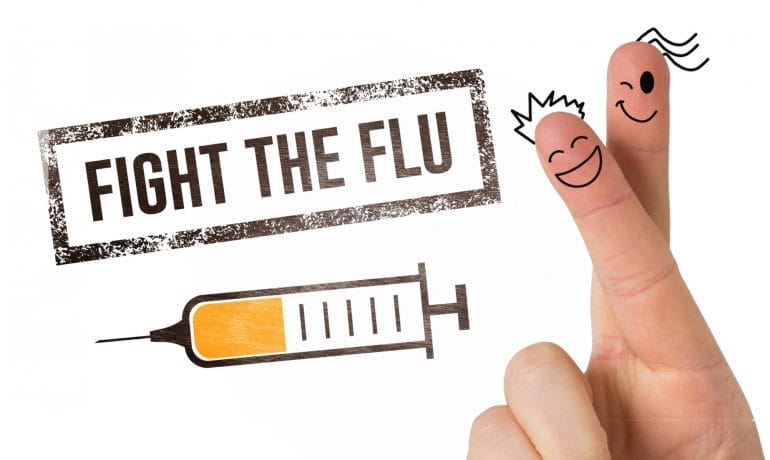You’ve probably heard the saying ‘An apple a day keeps the doctor away,’ but when it comes to flu season, it’s going to take more than just a daily Granny Smith. That’s where pediatric flu shots come in, an essential safeguard for children’s health during flu season.
But why exactly are these vaccinations so crucial? What role do they play in not just your child’s health, but the health of those around them? And aren’t there risks involved?
As we explore these questions, you’ll discover the true importance of these ‘flu fighters’ and why they’re more than just a prick in your child’s arm.
Understanding Pediatric Flu Shots
Every year, healthcare professionals recommend a flu vaccine for all children aged 6 months and older, as it’s a crucial shield against the flu and its potential complications. This recommendation is underscored by the fact that flu vaccination significantly reduces the risk of hospitalization for children, particularly in flu seasons where the vaccine viruses are well-matched.
You have two types of flu vaccines to choose from for your children – flu shots and the nasal spray flu vaccine. Both are effective in preventing Influenza and protecting not just your little ones, but also the broader community. Indeed, vaccination reduces the spread of the flu, offering a measure of protection to vulnerable populations, such as infants and those with underlying health conditions.
Remember, flu isn’t just a severe cold. It can lead to serious complications, landing your child in a pediatric intensive care unit. So it’s vital to consult with healthcare providers for personalized guidance on flu vaccination for children with specific conditions or allergies.
In essence, a flu shot is a small act that can have a tremendous impact. It safeguards your child and helps maintain community health.
Importance of Flu Vaccination
Emphasizing the importance of flu vaccination, it’s crucial to realize that this annual routine not only reduces the likelihood of flu-related complications and hospitalizations, but also aids in protecting the more vulnerable members of our society.
Each year, you’re tasked with making choices that can impact not only your health but that of those around you.
- Vaccination reduces the risk of getting the flu. It’s not just about ensuring you don’t get sick; it’s about reducing the potential burden on our healthcare system by preventing avoidable hospitalizations.
- Flu vaccines are recommended annually. This is because the flu virus changes each year, and getting your yearly vaccine ensures you’re protected against the most recent strain.
- Vaccines can reduce a child’s risk. When your child gets vaccinated, they’re less likely to spread the flu to others, including older adults and infants who can’t receive the vaccine.
Research shows that flu vaccination can reduce hospitalizations by protecting those most susceptible. It’s a small act that carries significant weight.
The Flu Shot Procedure
Navigating the flu shot procedure, it’s crucial for you to understand that this involves receiving an injection of the influenza vaccine, typically administered in your upper arm muscle. It’s a critical part of safeguarding children, especially those under 5 years of age, against the flu virus whose severity varies each season.
Before administering the vaccine, healthcare professionals will inquire about any allergies or previous adverse reactions to vaccines. This evaluation is vital to ensure the safety and effectiveness of the vaccines that are recommended for use in children. The healthcare provider will then clean the injection site and administer the vaccine. A nasal spray vaccine is also available for some children.
After receiving the flu shot, you’re typically advised to stay at the vaccination site for 15-20 minutes. This observation period helps mitigate the risk of immediate adverse effects. Remember, flu complications can be severe; countless children have unfortunately lost their lives after contracting the flu.
Always follow up with your healthcare provider if you have concerns about the vaccine’s effectiveness or if unexpected reactions occur. The primary goal is to prevent children from becoming another statistic, another child who’d to die from the flu.
Addressing Common Concerns
When it comes to protecting your child from the flu, you may have genuine concerns about the safety, effectiveness, and potential side effects of the flu vaccine. Rest assured, numerous studies show that the flu vaccine significantly reduces a child’s risk of severe illness, hospitalization, and even death from influenza.
Among common concerns are:
- Safety: Flu vaccines undergo rigorous testing before approval. The latest flu vaccines are safer than ever, with a relatively low risk of minor side effects such as soreness at the injection site or mild fever.
- Effectiveness: A study shows that flu vaccines reduce a child’s risk of flu-related hospitalization by 74% and cut the risk of flu-related death by 65%.
- Side effects: Complications every year from the flu far outnumber any potential vaccine side effects.
There are different types of vaccines available, including the use of nasal spray for those children who fear needles. However, precautions against the use of certain vaccines may apply for children with specific medical conditions. Always consult your pediatrician to make the best choice for your child’s health.
Safeguarding Children’s Health
Protecting your child’s health against the flu is paramount, and the first step is ensuring they receive their annual flu shot, especially since this deadly virus can easily spread through respiratory droplets, coughing, and sneezing.
Families Fighting Flu understand the critical role pediatric flu shots play in safeguarding our children, significantly reducing a child’s risk of dying from flu and its complications.
When vaccine viruses are well matched to circulating flu viruses, flu shots can save lives and reduce hospitalizations. It’s also proven to decrease a child’s risk of admission to pediatric intensive care units. Children with certain underlying medical conditions are particularly vulnerable, making the vaccine crucial.
To learn more about precautions, flu vaccination programs, and how to maintain the highest standards of quality in your child’s healthcare, consult a healthcare professional.
Frequently Asked Questions
Is the Children’s Flu Vaccine Safe?
Yes, it’s safe. Vaccine ingredients undergo rigorous testing, ensuring efficacy. Immunization schedules are designed for children’s safety. It offers health benefits beyond natural immunity, aiding in herd immunity, reducing flu severity, and debunking vaccine misconceptions.
What Are the CDC Guidelines for Flu in Kids?
You should follow CDC guidelines for kids’ flu prevention. They recommend child immunization for everyone over six months, especially those with chronic conditions. This vaccine schedule helps minimize flu complications and symptoms, enhancing pediatric health.
How Do I Prepare My Child for a Flu Shot?
To prepare your child for a flu shot, have a pre-shot conversation explaining its importance. Use distraction techniques, bring comfort items, and manage fear. After, reward their bravery. Involve them in appointment timing for emotional preparation.
What Are the Side Effects of the Flu Vaccine 2023?
You might experience mild symptoms like soreness or fatigue after the 2023 flu vaccine. Severe reactions are rare, but if you notice any allergic responses, contact a healthcare provider immediately for side effect management.
Conclusion
So, don’t leave your child’s health to chance. Like a superhero’s shield, a simple flu shot can deflect the invisible enemy that’s the flu virus.
It’s not just about safeguarding your little ones, it’s about fortifying the whole community.
Remember, every shot counts in this battle against the flu.
So, let’s arm our children with the best defense – a flu vaccine.
Because a healthier tomorrow starts with a safer today.



















